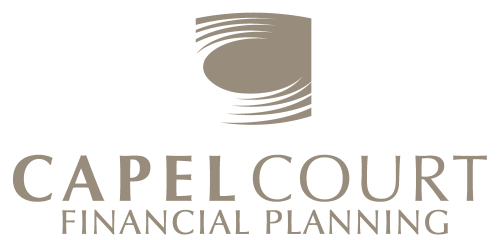
Why is this area important?
Retirement planning can never begin soon enough. We can offer you guidance and advice to plan for your future income requirements, covering all the various options available to you. By taking into account your current circumstances, attitude to risk, time horizons and retirement objectives, we help you to make the right choices from the moment you make your first pension contribution through to the day you choose to take the benefits, and thereafter.
What solutions are there?
There are many options available to you when considering this area of financial planning. The need for sound retirement planning is ever present as increased life expectancy means many people are now predicted to live even longer. As most people still choose to retire around the age of 65, it is necessary to make sure you have made adequate provision to provide an income when you choose to reduce your working hours, or retire fully.
To achieve the goal of building a pension fund that you can utilise towards the provision of an income in retirement requires careful planning. Many individuals are fortunate enough to be able to join a company pension scheme, which often means that your employer may make contributions to your pension fund. For those that are unable to join a company pension scheme, there are numerous alternatives available to help achieve the goal of building a pension fund that will provide an income in retirement. At Capel Court we can help you make the right decisions now in order to secure a future income whilst also taking into account the tax benefits and advantages associated with early planning.
Below is a summary detailing the main different types of retirement options and products that may be considered as part of your personal retirement planning requirements.
Pre-Retirement
Company Pension Schemes:
- Company Pension Schemes (Final Salary / Money Purchase)
- Group Personal Pension
- Group Self Invested Personal Pension (GSIPP)
- Group Small Self Administered Scheme (GSSAS)
- Section 32 Buy-out Bond
If you are fortunate enough to have been able to join a company pension scheme, it is likely that you hold one of the above mentioned products. Companies often choose to contribute to these pension schemes, to help their employees fund their retirement planning. In most cases joining your company pension scheme is the right decision to make if you are given the option and opportunity to do so.
Personal Pension
This is the most common pension product for those who may not have been able to join a company pension scheme, or indeed may be self-employed. Provided by the major insurance & investment companies, personal pensions offer individuals the opportunity to purchase funds according to their attitude to risk and investment objectives.
Stakeholder Pension
A stakeholder pension is a form of personal pension that has to satisfy a number of criteria to have the designation of 'stakeholder'. Initially formulated by the government to provide consumers with an instantly recognisable 'fair deal', stakeholder pensions have strict limits on the annual management charge applicable, are not allowed to charge individuals to transfer monies in or out, have low minimum levels of contribution and must be run for the benefit of their members. Legislation also states that any UK based employer with 5 or more employees, has to offer at the very least a stakeholder pension scheme to their staff.
Self Invested Personal Pension (SIPP)
SIPPs are a form of personal pension; however they allow a far greater selection of investments to be placed within the pension wrapper. With the cost of owning a SIPP having significantly reduced, it now seems to be a more popular choice for those who wish to be able to have the widest range of investment choice, within a similar charging structure to that of a personal pension.
Retirement Annuity Contracts (RACs)
RACs are also a type of personal pension plan that individuals could take out before 1 July 1988, at which point the current form of personal pension was introduced. RACs were only available to those in employment where there was no access to an occupational scheme and to those in self-employment, provided they had earnings subject to UK taxation. RACs differed slightly to personal pensions in terms of the benefits they provided, often more advantageous to personal pensions, however since April 2006, RACs have been brought in line with personal pensions, and so many of the advantages once enjoyed by RAC holders do not now apply.
At Retirement:
Pension Commencement Lump Sum (PCLS)
Most pension schemes allow you to take an amount of money, tax free, from the fund at retirement. This is often referred to as a PCLS or a tax free lump sum, and can, depending on the scheme be up to 25% of the overall value of the fund at the point of taking the monies from the scheme. There are some situations where this may be higher than 25%, although this is the exception rather than the rule.
Annuities
At retirement age, depending on what type of pension product is used, one option for the pension fund is to utilise it to purchase an annuity. This is a product that pays you an income for the rest of your life. There are various options that can be built into this type of product, such as securing an income that is a fixed amount or one that escalates, or whether to build in guarantees for the provision of a spouses’ pension upon death during the guaranteed period.
You may also be eligible to receive an enhanced annuity rate if you take any form of medication, or have any pre-existing medical conditions. A person who has high blood pressure and / or high cholesterol levels for example would qualify for an enhanced annuity, which could allow a much higher level of income to be paid for the rest of their lives. Once a lifetime annuity is purchased, it cannot be changed, so it makes sense to consider all the options for this ‘one off’ transaction.
There is currently no secondary market for annuities though there is every intention of such a market being instigated at some point in the future. In the event that such a secondary market is instigated there will certainly be no guarantees as to what value for money the holder of an annuity would get or even if a secondary market will be available at the time a client may wish to sue it.
Open Market Option
Many providers of pension products also provide annuities. Due to government legislation however, you have to be offered the right to what is known as the ‘Open Market Option’. This means that we are able to search the whole market for you, to see who will provide you with the best income for the rest of your life, based on your requirements. This is a very important decision, as once you have committed to an annuity, you are unable change it. Based on our experience, very rarely is the annuity offered to you by your chosen pension provider the best available when compared with the whole of the market. This essentially means that more income could be obtained for you elsewhere, which, when considering that many people spend up to a third of their lives in retirement, small differences in the rates offered initially can compound to make quite a difference over the longer term.
Income Drawdown
For some individuals, the thought of purchasing an annuity does not appeal to them and they would rather leave their pension funds invested with the potential for their fund to grow. For these individuals income drawdown can be a solution as their pension fund remains invested whilst at the same time they are permitted to take an income from it. Income may either be for a fixed amount, or variable, dependent upon the requirements and circumstances of the individual client. In addition, they may also take ad-hoc lump sums from the fund at any time subject to qualifying criteria. The primary risks associated with this arrangement are that the funds will be subject to market and reduction in capital risks. As such, clients must accept that past performance is no guarantee of future returns and therefore be in a position to afford a level of risk and income withdrawals which are appropriate.
A specific point for consideration is that on death there are potential tax benefits depending on the individual case, and the wishes of the deceased, which can be useful when considering Inheritance tax liabilities.
For more information on any aspects of Retirement Planning please contact us.
